The eNOTICE Consortium
- Catholic University of Louvain (UCL)
- Campus Vesta (VESTA)
- Seine-et-Marne District Fire and Rescue Department (SDIS 77)
- Association pour la Recherche et le Développement des Méthodes et Processus Industriels (ARMINES)
- City of Dortmund Fire Department (FDDO)
- safety innovation center (SIC)
- Joint CBRN Defence Centre of Excellence (JCBRN Defence COE)
- Middle East Technical University (METU)
- University of Rome “Tor Vergata” (UNITOV)
- National CBRN Centre (WMP)
- War Studies University (CBRN Defence Training Centre, Faculty of Military Studies) (WSU)
- Scientific and Research Centre for Fire Protection – National Research Institute (CNBOP-PIB)
Catholic University of Louvain
Université catholique de Louvain
The “Centre de Technologies Moléculaires Appliquées (CTMA – Center for Applied Molecular Technologies)” is a mixed military-clinical-academic technological platform. This platform hosts at the same location clinicians, biologists and engineers of the Belgian Ministry of Defense (BE-MOD), the Université catholique de Louvain (UCL) and its associated academic hospital (Cliniques universitaires St-Luc). CTMA/UCL has a strong multidisciplinary expertise in the development of medical research and applied sciences (rapid genetic identification of intentional, accidental or natural release of biological agents and diagnosis of genetic diseases).
CTMA/UCL is an experienced coordinator of participant to national and international research projects in the field of security (e.g. EC/FP7, EC/H2020, ESA, EDA and NATO). Those have with a strong focus on CBRN risk management. CTMA/UCL has developed a broad network of collaboration with clinical, academic, military partners throughout Europe and Africa. Since 2008, CTMA/UCL developed actively the B-LiFE (Biological Light Fieldable Laboratory for Emergencies) deployable laboratory which was deployed in 2014 and 2015 in Guinea during the Ebola outbreak in West Africa.
B-LIFE successfully passed the certification process as module of EUCPM (voluntary pool / DG ECHO) during the MODEX 2017 exercise in Revinge, Sweden, April 2017, and the table top ModTTX 4 in Bruges in May 2017.
Le Centre des technologies moléculaires appliquées (CTMA) est une plateforme technologique militaire-clinique-universitaire employant des cliniciens, biologistes et ingénieurs de la Défense (BE-MOD), de l'Université catholique de Louvain (UCL) et des Cliniques Universitaires St Luc. CTMA utilise cette large expertise multidisciplinaire en recherche médicale et en sciences appliquées, notamment pour la mise au point de nouveaux tests d’identification génétique rapide d’agents biologiques dans le contexte d’une dissémination intentionnelle, accidentelle ou naturelle ou pour le diagnostic des maladies génétiques.
CTMA/UCL participe ou coordonne régulièrement des projets de recherche nationaux et internationaux dans le domaine de la sécurité (e.g. EC / FP7, EC / H2020, ASE, ADE et OTAN). Le focus principal est la gestion des risques CBRN. CTMA/UCL a développé un vaste réseau de coopération avec des partenaires cliniques, universitaires et militaires à travers l'Europe et l'Afrique. Depuis 2008, CTMA/UCL développe activement le laboratoire déployable B-LiFE (Biological Light Fieldable Laboratory for Emergencies), déployé en 2014 et 2015 en Guinée lors de l’épidémie d'Ebola en Afrique de l’ouest.
B-LIFE a réussi les épreuves de certification des modules EUCPM (Voluntary Pool / DG ECHO) lors de l’exercice MODEX à Revinge, Suède, avril 2017, et du table top ModTTX 4 à Bruges en mai 2017.

Campus Vesta
Campus Vesta
Campus Vesta is an institution for education, training and research, with 3 pillars of activities:
- Public safety training & education
- Campus Vesta provides education and training for fire-fighters, policemen, ambulance personnel, disaster management and HAZMAT specialists, and companies/public bodies dealing with public safety and security. It is a provincial, public entity (Province of Antwerp).
- Emergency management knowledge centre
- Campus Vesta’s broad network of practitioners and end users makes it the ideal intermediary to capture new needs and knowledge; to evaluate new techniques, processes, products, services and to transfer innovation to the field. The accumulated knowledge is also shared with public bodies, requesting assistance and support.
- Multidisciplinary testing & exercise infrastructure
- One of Campus Vesta’s main features is its extensive infrastructure. The site is located on a former English military base (50ha). The modern main building consists of more than 25 classrooms, an auditorium, several spaces for role playing and practical training. Outside, the terrain harbours sites for firefighter training, confined spaces training, a 2×2 lane highway, a three story building and various other urban facilities for scenario training.
Campus Vesta has extended experience in training, teaching, disseminating new knowledge and organisation of mono- and multidisciplinary table top and field exercises.
Vesta is een opleidings-, trainings- en onderzoekscentrum, met 3 kernactiviteiten:
- Opleidingen en training publieke veiligheid
- Campus Vesta organiseert opleidingen en training voor brandweer, politie, ambulanciers, specialisten rampenmanagement, adviseurs gevaarlijke stoffen en bedrijven/overheidsinstanties die instaan voor publieke veiligheid en beveiliging. Het is een publieke entiteit, die ressorteert onder de Provincie Antwerpen.
- Kenniscentrum crisismanagement
- Door haar breed netwerk (praktijkmensen, experten, eindgebruikers) bekleedt Campus Vesta een centrale positie voor het identificeren van nieuwe noden en het capteren van kennis. Campus Vesta werkt mee aan het testen en evalueren van nieuwe technieken, processen, producten en diensten en slaat zo de brug met het werkveld. Opgebouwde expertise wordt op vraag om advies of ondersteuning eveneens gedeeld met overheidsinstanties.
- Multidisciplinaire test- en oefeninfrastructuur
- Een belangrijke troef van Campus Vesta is de unieke infrastructuur. De site was aanvankelijk een Engels militair kamp op een terrein van 50 ha. Het moderne hoofdgebouw bevat meer dan 25 leslokalen, een auditorium, tal van ruimtes voor rollenspellen en praktische training. Het buitenterrein omvat sites voor brandweertraining, besloten ruimten, een stuk autosnelweg, een drieverdiepingsgebouw en een oefendorp met uitgebreide faciliteiten voor scenariotraining.
Campus Vesta is een ervaren speler in veiligheidstraining, onderwijs en kennisverspreiding en de organisatie van mono- en multidisciplinaire table top en inzetoefeningen.

Seine-et-Marne District Fire and Rescue Department
Service Départemental d’Incendie et de Secours de Seine-et-Marne
The Seine-et-Marne district Fire and Rescue Department is a public agency in charge of firefighting missions. The department also carries out various rescue missions with other agencies.
Due to the wide range of different environments and economic activities within its area of responsibility, the fire and rescue department hosts many specialized units (urban search and rescue, divers, HAZMAT teams, etc.) A network of 61 fire stations enables the department to respond quickly on all its area.
The Fire and Rescue department is endowed with an annual budget of €170,000,000. The 1300 professional and 3000 volunteer firefighters carry out more than 110,000 rescue missions each year.
The training centre is in charge of the training of all firefighters (professional or volunteers) as well as administration and support personnel. It also provide CBRN training for its own specialized units and other multidisciplinary agencies.
Le service départemental d’incendie et de secours de Seine-et-Marne est un établissement public chargé de la lutte contre les incendies. Il remplit également, en partenariat avec d’autres organisations, diverses missions de secours.
En raison de la diversité des paysages et des activités économiques situés dans sa zone de responsabilité, le service départemental dispose de nombreuses équipes spécialisées (sauvetage-déblaiement, plongeurs, risques technologiques…). Un maillage de 61 centres de secours lui permet d’apporter une réponse opérationnelle rapide sur tout le territoire.
Le service départemental est doté d’un budget annuel de 170 M€. Les 1300 sapeurs-pompiers professionnels et les 3000 sapeurs-pompiers volontaires accomplissent chaque année plus de 110000 missions de secours.
Le centre de formation assure la formation de tous es sapeurs-pompiers, professionnels et volontaires, ainsi que des personnel administratifs et techniques. Il assure également l’entraînement à la gestion des risques NRBC de ses propres unités, ainsi que des unités d’autres ministères.
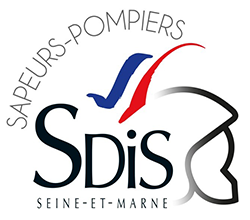
Association pour la recherche et le developpement des methodes et processus industriels
Association pour la recherche et le developpement des methodes et processus industriels
ARMINES is a private non-profit research and technological organisation (RTO) funded in 1967 at the instigation of its partner engineering schools, the Ecoles des Mines network.
ARMINES currently shares 48 Joint Research Units (Common Research Centres) with its partner schools, where each legal entity, either private or public, provides personnel, investment and operating resources for common research purpose.
Le centre de recherche ARMINES - LGI2P (Laboratoire de Génie Informatique et d’Ingénierie de Production) développe et met en œuvre des concepts, méthodes et outils pour identifier et lever des verrous techniques, technologiques et organisationnels auxquels sont confrontés industries et services. L’activité du centre de recherche LGI2P s’inscrit dans le domaine des sciences et technologies de l’information et de la communication.
Elle est centrée sur la conception, la réalisation, l’optimisation de systèmes techniques, de dispositifs sociotechniques et le pilotage de processus collaboratifs. Cette recherche finalisée donne lieu à de nombreux partenariats industriels et académiques, aux niveaux régional, national et européen.
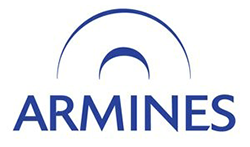
City of Dortmund Fire Department
Stadt Dortmund Feuerwehr
The Fire Department of Dortmund (FDDO) is the largest fire department in its local area and the sixth largest in Germany. It is responsible for fire rescue operations as well as emergency management in the city. In 2006 the Institute for Fire Service and Rescue Technology (IFR) was founded as a department for the research into more efficient but practicable technology and methods. A close contact with other German and European fire departments and related organisations ensures a knowledge transfer and an understanding for new technology and methods.
Furthermore: FDDO is involved into the supra-local emergency support concept of the federal state North Rhine Westphalia. Additionally, the FDDO runs one of seven Analytical Task Forces (ATF) located in Germany embedded in the nation-wide CBRN incident response concept. These Task Forces are highly specialized mobile operation groups with appropriate special competences that go beyond the possibilities of first appliance. All of the ATF-units are interlinked with each other. For mission related tactical reasons, the ATF are established at existing locations, which are particularly experienced in the field of CBRN-threat prevention, as Dortmund. The ATF guarantees comprehensive support of the mission management on site in the context of complex CBRN-situations.
Die Feuerwehr Dortmund ist die größte Feuerwehr des Ruhrgebiets und die sechst größte in Deutschland. In das Aufgabenfeld fallen neben der Brandbekämpfung auch der Rettungsdienst und der Katastrophenschutz. 2006 wurde das Institut für Feuerwehr- und Rettungsdiensttechnologie (IFR) als Forschungsabteilung der Feuerwehr Dortmund gegründet, um eine effizientere und praxisorientiertere Forschung im Bereich der Technologie- und Konzeptentwicklung zu etablieren. Dabei steht besonders ein enger Kontakt und hoher Informationsaustausch mit anderen Feuerwehren, sowie BOS auf nationaler und internationaler Ebene im Mittelpunkt.
Die Feuerwehr Dortmund ist Teil der überörtlichen Bereitschaften des Landes Nordrhein-Westfalens und hält darüber hinaus eine von bundesweit sieben Einheiten der Analytischen Task Force (ATF) vor, die im Falle eines CBRN Zwischenfalls alarmiert werden. Sie sind hoch spezialisierte und mobile Einheiten, deren Gerätschaften und Kompetenzen weit über die normal kommunal vorgehaltenen Einsatzmittel hinausgehen. Die ATF-Einheiten sind bereits untereinander vernetzt. Dies ermöglicht eine schnelle Alarmierung der ATF, deren Gerätschaften auch zu Luft an die Einsatzstelle gebracht werden können. Aus einsatztaktischen Gesichtspunkten werden die Einheiten an festen Standorten vorgehalten, deren Träger besondere Erfahrung mit CBRN-Einsätzen vorweisen können, wie z.B. Dortmund. Die ATF bietet der Einsatzleitung vor Ort umfassende Unterstützung im Bereich der CBRN Gefahrenabwehr.
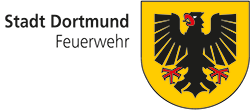
safety innovation center
safety innovation center
Disaster management can and should benefit from technological developments and in particular from the digital transformation! To achieve this, we believe that the increasingly unmanageable technological potential must be brought into line with the changing needs of the disaster management. This is our vision, which we have shared since at least 2009. In that year, our shared journey began at the University of Paderborn, where we (in the team of Professor Dr.-Ing. Rainer Koch, Computer Application and Integration in Design and Planning, C.I.K.) worked together in national and international projects to bring our ideas into practice. In 2017, in cooperation with the city of Paderborn, the district of Paderborn and the University of Paderborn, the safety innovation center e.V. (registered non-profit association) emerged with the non-profit purpose of promoting innovations in civil safety. Since 2022, we drive our vision forward as the safety innovation center gGmbH (non-profit company).
Integrating the practice of fire brigade, order enforcement office, rescue service, public safety answering point, etc. of a rural district and a large city belonging to the district, allows us to represent a typical constellation within the disaster management process. Our advisory board contributes complementary perspectives.
Die Gefahrenabwehr kann und soll von technologischen Entwicklungen und insbesondere von der Digitalen Transformation profitieren! Hierfür müssen aus unserer Sicht die immer unüberschaubareren technologischen Potenziale mit den sich verändernden Bedarfen der Gefahrenabwehr in Einklang gebracht werden. Das ist unsere Vision, die wir seit mindestens 2009 teilen. In dem Jahr startete unser gemeinsamer Weg an der Universität Paderborn, wo wir (im Team von Professor Dr.-Ing. Rainer Koch, Computeranwendung und Integration in Konstruktion und Planung, C.I.K.) in nationalen und internationalen Projekten gemeinsam daran arbeiteten, unsere Ideen in die Praxis zu bringen. 2017 ist daraus in Kooperation mit Stadt Paderborn, Kreis Paderborn und Universität Paderborn der safety innovation center e.V. mit dem gemeinnützigen Zweck der Förderung von Innovationen in der zivilen Gefahrenabwehr hervorgegangen. Seit 2022 treiben wir unsere Vision als safety innovation center gGmbH voran.
Unsere Kooperation mit Kreis Paderborn und Stadt Paderborn ermöglicht die Bündelung vergangener Forschung und künftiger Forschungsinteressen. Durch die Einbindung der Praxis von Feuerwehr, Ordnungsamt, Rettungsdienst, Leitstelle etc. eines ländlich geprägten Kreises und einer kreisangehörigen Großstadt gelingt es, eine typische Konstellation in der Gefahrenabwehr abzubilden. Unser Beirat trägt ergänzende Perspektiven dazu bei.

Joint CBRN Defence Centre of Excellence
The Joint CBRN Defence Centre of Excellence is a multinationally sponsored, independent and NATO accredited International Military Organization providing its services, in particular its recognized expertise and experience, to the benefit of its member nations, of NATO, of the European Union and of other partners. It combines the skills from more than 60 personnel from thirteen nations in the area of Concepts, Doctrine Development, Capability Development, Experimentation, Training, Exercises, Education, Lessons Learned, Modelling & Simulation, Reachback and Operational Planning Support; it acts as NATO Department Head for Weapons of Mass Destruction and CBRN Defence Training and Education, and provides the core for the NATO CBRN Reachback Element. Operators, Scientists, Administrators, Managers and Practitioners with experiences in and outside the military provide their expertise, and together they form a unique CBRN defence capability, acting primarily as a think tank for NATO, but more and more engaging in training and operations support for the North Atlantic Alliance, too.
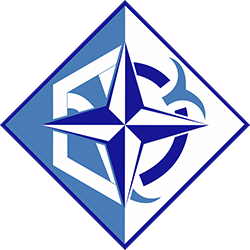
Middle East Technical University
Orta Doğu Teknik Üniversitesi
Orta Doğu Teknik Üniversitesi (ODTÜ), founded in 1956, is an international research university which seeks excellence in serving the country, region and the world. It is the first and only university in Turkey to enter the top 100 in The Times’ “Higher Education World University Rankings 2014” list. as of June 30, 2017, ODTÜ has 18 H2020 projects with a total budget of €71M where ODTÜ’s share is €4.5M. ODTÜ specifically pays attention to supporting mobility of researchers in order to increase two-way transfer of knowledge. For this purpose, ODTÜ has hosted 24 MSCA Individual Fellowships (as of FP6), 24 of which have already been completed with a budget of about €2.9M and two of ongoing projects with a budget over €320,000. In terms of national R&D projects, where TÜBİTAK is the leading funding agency, ODTÜ has a prominent position amongst Turkish universities with more than 1000 projects having a total budget of ₺417M (approx. €100M). At any given time, ODTÜ has approximately 400 R&D projects nationally funded by TÜBİTAK and various ministries and 60 R&D projects internationally sponsored, mainly by the EU Research and Innovation Framework Programmes.
1956 yılında kurulan Orta Doğu Teknik Üniversitesi (ODTÜ), ülkeye, bölgeye ve dünyaya hizmet etmek için mükemmeli isteyen uluslararası bir araştırma üniversitesidir. ODTÜ, The Times Yüksek Öğretim Dünya Üniversiteleri Sıralamaları 2014 listesinde ilk 100'e giren ilk ve tek üniversitedir. ODTÜ'nün 30 Haziran 2017 tarihi itibariyle toplam 4.5 milyon avro ODTÜ payı olan toplamda 71 milyon avroluk 18 H2020 projesi bulunmaktadır. ODTÜ, özellikle iki yönlü bilgi aktarımını artırmak için araştırmacıların hareketliliğini desteklemeye dikkat etmektedir. Bu amaçla ODTÜ, 24 MSCA bireysel burs sahibi araştırmacıya ev sahipliği yapmıştır. ODTÜ, TÜBİTAK'ın önde gelen finansman kuruluşu olduğu ulusal Ar-Ge projeleri açısından, toplam 417 MTL (yaklaşık 100 M avro) bütçeli 1000'den fazla projeyle Türk üniversiteleri arasında önemli bir yere sahiptir. ODTÜ, başta AB Araştırma ve Yenilikçilik Çerçeve Programları olmak üzere, TÜBİTAK ve çeşitli bakanlıklar ve uluslararası sponsorluk altındaki 60 Ar-Ge projesi ile ulusal olarak finanse edilen yaklaşık 400 AR-GE projesine sahiptir.

University of Rome “Tor Vergata”
Università degli Studi di Roma “Tor Vergata”
The University of Rome “Tor Vergata” was established in 1982: it is therefore a relatively young University. It was designed on the model of Anglo-Saxon campuses: it stretches on 600 hectares and hosts important research institutions, such as CNR and the Italian Space Agency – ASI, ENEA, ESA-ESRIN, the National Institute of Astrophysics, Monte Porzio Catone Observatory and the National Institute of Nuclear Physics. Right from the start their presence has contributed to turning “Tor Vergata” into a dynamic research pole.
Furthermore, the Campus hosts one of the most modern hospitals in Italy, the University Hospital Tor Vergata, a care and research centre where the Medical School is active as well.
Since 2009, Tor Vergata organizes the international Master Courses in Protection Against CBRNe Events, and became the first and only university that awards students with an Academic title on CBRNe.
The Master courses, organized jointly by the Department of Industrial Engineering and the Medical School, can boast the status of NATO selected, and cooperation agreements with OPCW, the Italian Ministry of the Interior, Ministry of Defence, Presidency of the Council of Ministers, and other national and international public and private entities operating in the field of CBRNe.
L'Università di Roma “Tor Vergata” è stata fondata nel 1982: è quindi un'università relativamente giovane. È stata progettata sul modello di campus anglosassone: si estende su 600 ettari e ospita importanti istituti di ricerca come CNR e Agenzia Spaziale Italiana - ASI, ENEA, ESA-ESRIN, Istituto Nazionale di Astrofisica, Osservatorio Monte Porzio Catone e l'Istituto Nazionale di Fisica Nucleare. Fin dall'inizio la loro presenza ha contribuito a trasformare “Tor Vergata” in un polo di ricerca dinamico.
Il Campus ospita uno degli ospedali più moderni in Italia, l'Ospedale Universitario Tor Vergata, un centro di cura e ricerca dove è attiva anche la Scuola di Medicina.
Dal 2009 Tor Vergata organizza i Master internazionali in Protection Against CBRNe Events e diventa così la prima e unica università che premia gli studenti con un titolo accademico su CBRNe.
I corsi Master, organizzati congiuntamente dal Dipartimento di Ingegneria Industriale e dalla Scuola di Medicina, possono vantare lo status di NATO selected e accordi di cooperazione con OPCW, Ministero dell'Interno, Ministero della Difesa, Presidenza del Consiglio dei Ministri e altri enti pubblici e privati nazionali ed internazionali operanti nel settore della CBRNe.

National CBRN Centre
The National CBRN Centre, part of Counter Terrorism Policing, brings together the emergency services to protect and prepare the UK against the CBRN threat.
Working together to support, strengthen and assure a resilient CBRN capability for the UK, Chief Officers from the Police, Fire and Ambulance services lead the Centre's strategy in partnership with military and government agencies. Seconded emergency services personnel deliver the Centre’s tri-service strategy to promote an interoperable, efficient, robust and proportionate approach in managing and responding to the CBRN threat.
The Centre takes cognizance of the Counter Terrorism Policing national and international strategies, which reflects the government's counter terror strategy CONTEST. The Centre shares the national vision to reduce the risk of terrorism to the UK and its overseas interests, and to keep the public safe from terrorism.
The Centre's key strategic work streams are:
- Support emergency services and partners to deliver and develop their CBRN capability to mitigate the impact of a terrorist incident. This includes the provision of 24-hour operational CBRN support to emergency responders, activity to support warning and information awareness campaigns and Command and Control doctrine development.
- Strengthen emergency service and partner capabilities to provide improved public protection. This includes training and continuous professional development for responders, control rooms and wider partners, facilitation of equipment and mobilization strategies and, increasingly, protective activities to target harden and choke access routes for illicit materials.
- Assure against standards to inform strategic direction and prioritization of efforts. This includes testing and exercising, sharing learning and the development of international knowledge exchange and expertise.
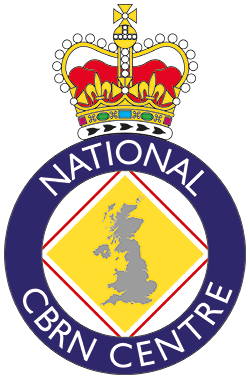
War Studies University (CBRN Defence Training Centre, Faculty of Military Studies)
Akademia Sztuki Wojennej (Centrum Szkolenia Obrony Przed Bronią Masowego Rażenia, Wydział Wojskowy)
War Studies University (WSU) is the strategic level academic entity acting under auspices of Ministry of Defence. CBRN Defence Training Centre and Military Faculty are the subunits of WSU to be involved in eNOTICE project.
The CBRN Training Centre is the teaching unit responsible for planning and organisation of training (education) in the scope of defence against weapons of mass destruction for the command and staff personnel and the personnel specialising in defence against weapons of mass destruction. The educational offer of the Centre is also aimed at the personnel of the external entities, including: crisis management bodies, rescue services and foreign institutions. The Centre is also an analytical and expert institution supporting the elements of the national and European system of defence against weapons of mass destruction. The research area is focused on development of new concepts of CBRN defence organization and technologies implementation to maintain commander’s freedom of action for the purpose of NATO/EU lead operations in case of anticipated or actual CBRN hazards.
Main task of Military Faculty is preparation of qualified command and staff officers able to perform tasks at the tactical, operational and strategic level inside national and multinational (allies and coalition) environment. Additionally, Military Faculty is responsible for professional development of command and staff officers in accordance with the needs of the Polish Armed Forces and teaching tasks for the governmental institutions responsible for defense issues.
Wydział Wojskowy i Centrum Szkolenia Obrony Przed Bronią Masowego Rażenia są jednostkami dydaktycznymi Akademii Sztuki Wojennej.
Centrum Szkolenia Obrony przed Bronią Masowego Rażenia (CSOPBMR) jest jednostką organizacyjną Akademii powołaną do prowadzenia działalności dydaktycznej oraz analityczno-publicystycznej w zakresie obrony przed bronią masowego rażenia oraz obszarów pochodnych. CSOPBMR realizuje kursy specjalistyczne dedykowane kadrom wojskowym i cywilnym Systemu Bezpieczeństwa Państwa oraz służbom ratowniczym, zapewniając wiedzę i umiejętności niezbędne na zajmowanych i przyszłych stanowiskach służbowych. Ponadto wspiera pozostałe podstawowe jednostki organizacyjne Akademii w realizacji procesu dydaktycznego na studiach (w tym podyplomowych) i kursach w obszarze szeroko pojętego bezpieczeństwa chemicznego, biologicznego i radiologicznego, rocznie szkoląc kilkaset osób. Dodatkowo, w ramach działalności eksperckiej, Centrum wspiera Europejską Agencję Obrony w ocenie prowadzonych programów badawczych; uczestniczy także w projektach realizowanych pod jej auspicjami. Aktywnie działa także w grupie roboczej NATO ds. szkolenia z OPBMR oraz w ramach kontaktów bilateralnych, z Centrum Doskonałości OPBMR NATO.
Wydział Wojskowy (WW) jest odpowiedzialny za kształcenie i doskonalenie kadr dowódczo-sztabowych na potrzeby systemu dowodzenia i kierowania Sił Zbrojnych RP, we współpracy z sojuszniczymi i narodowymi organami dowodzenia oraz ośrodkami naukowo-badawczymi. WW jest głównym ośrodkiem w zakresie rozwijania, kształtowania i propagowania sztuki wojennej, w tym przede wszystkim: sztuki operacyjnej (myślenia strategicznego) i taktyki, dowodzenia, wsparcia i zabezpieczenia działań.
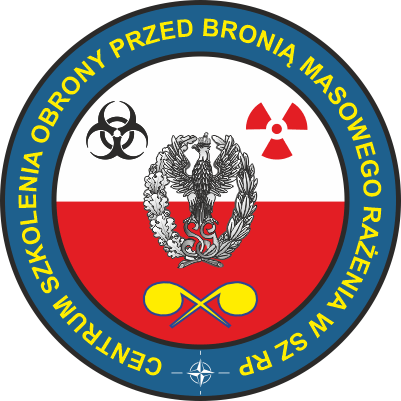
Scientific and Research Centre for Fire Protection – National Research Institute
Centrum Naukowo-Badawcze Ochrony Przeciwpożarowej – Państwowy Instytut Badawczy
CNBOP-PIB is a research and training institute of the State Fire Service of Poland with 45 years of experience. The mission of CNBOP-PIB is activity in relation to ensuring general safety in the field of fire protection, civil protection and crisis management. The institute has over 20 years of experience in organising trainings concerning above mentioned areas/issues There are open and close trainings offered, as well as conferences, seminars and workshops. There is a possibility of organising trainings on demand. All trainings are conducted by qualified lectures and practitioners. CNBOP-PIB closely cooperates with both State and Voluntary Fire Service, whose officers often participate in the trainings held in the institute and in its projects.
Moreover, CNBOP-PIB conducts and provides:
- researches, tests and certification of products used for fire protection and personal safety (e.g equipment and the agents used by firefighting units)
- technical approvals and analysis of fire protection systems
- analyses of the causes and factors behind the spread of fires
- analyses oft he processes of burning and explosions
- educational initiatives for common and personal safety
- publishing activities
The institute is also involved in projects related to innovative solutions in the field of fire and civil protection.
CNBOP-PIB jest instytutem badawczym Państwowej Straży Pożarnej, który działa od 45 lat. Jego misją jest działalność na rzecz zapewnienia bezpieczeństwa powszechnego Państwa w zakresie ochrony przeciwpożarowej, zarządzania kryzysowego, ochrony ludności i obrony cywilnej.
Instytut ma ponad 20 lat doświadczenia w organizowaniu szkoleń z ww. obszaru. Oferowane są szkolenia otwarte i zamknięte, jak również konferencje, seminaria i warsztaty. Istnieje możliwość zorganizowania szkoleń na temat wybrany przez klienta. Wszystkie szkolenia prowadzą wykwalifikowani wykładowcy i praktycy. CNBOP-PIB współpracuje z Ochotniczą, jak i Państwową Strażą Pożarną, której funkcjonariusze często uczestniczą w szkoleniach i przedsięwzięciach organizowanych w instytucie.
Co więcej, w CNBOP-PIB przeprowadzane są:
- badania, testy i certyfikacja produktów używanych w ochronie przeciwpożarowej i ochronie ludności (np. sprzęt i środki gaśnicze używane przez jednostki straży),
- aprobaty techniczne i badania systemów ochrony przeciwpożarowej,
- analizy przyczyn rozprzestrzeniania się pożarów,
- badania procesów spalania i wybuchów,
Podejmowane są także inicjatywy edukacyjne w zakresie stosowania środków ochrony osobistej i zbiorowej, a także wydawane są publikacje. Instytut bierze udział w projektach dotyczących innowacyjnych rozwiązań w obszarze ochrony przeciwpożarowej i ochrony ludności.

